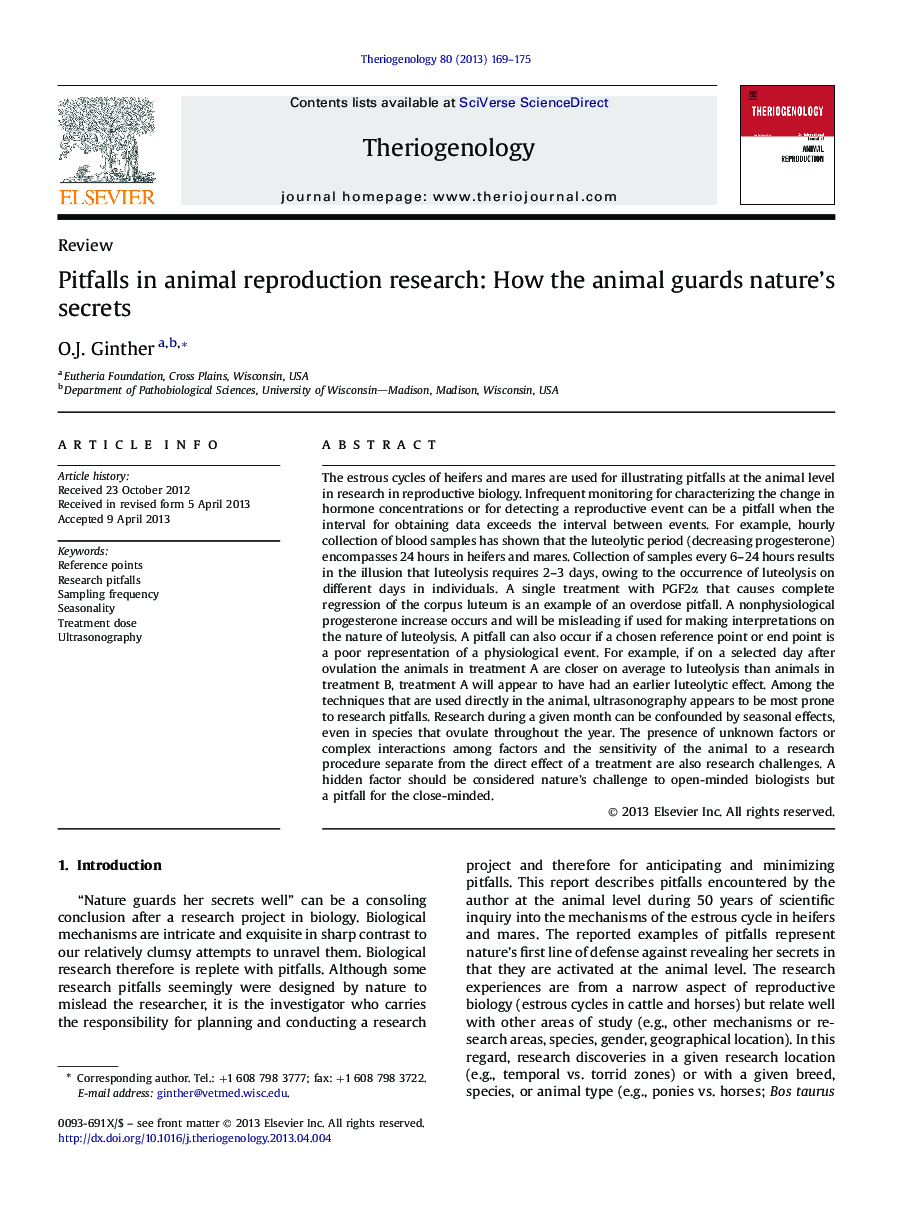| Article ID | Journal | Published Year | Pages | File Type |
|---|---|---|---|---|
| 2095359 | Theriogenology | 2013 | 7 Pages |
The estrous cycles of heifers and mares are used for illustrating pitfalls at the animal level in research in reproductive biology. Infrequent monitoring for characterizing the change in hormone concentrations or for detecting a reproductive event can be a pitfall when the interval for obtaining data exceeds the interval between events. For example, hourly collection of blood samples has shown that the luteolytic period (decreasing progesterone) encompasses 24 hours in heifers and mares. Collection of samples every 6–24 hours results in the illusion that luteolysis requires 2–3 days, owing to the occurrence of luteolysis on different days in individuals. A single treatment with PGF2α that causes complete regression of the corpus luteum is an example of an overdose pitfall. A nonphysiological progesterone increase occurs and will be misleading if used for making interpretations on the nature of luteolysis. A pitfall can also occur if a chosen reference point or end point is a poor representation of a physiological event. For example, if on a selected day after ovulation the animals in treatment A are closer on average to luteolysis than animals in treatment B, treatment A will appear to have had an earlier luteolytic effect. Among the techniques that are used directly in the animal, ultrasonography appears to be most prone to research pitfalls. Research during a given month can be confounded by seasonal effects, even in species that ovulate throughout the year. The presence of unknown factors or complex interactions among factors and the sensitivity of the animal to a research procedure separate from the direct effect of a treatment are also research challenges. A hidden factor should be considered nature’s challenge to open-minded biologists but a pitfall for the close-minded.
